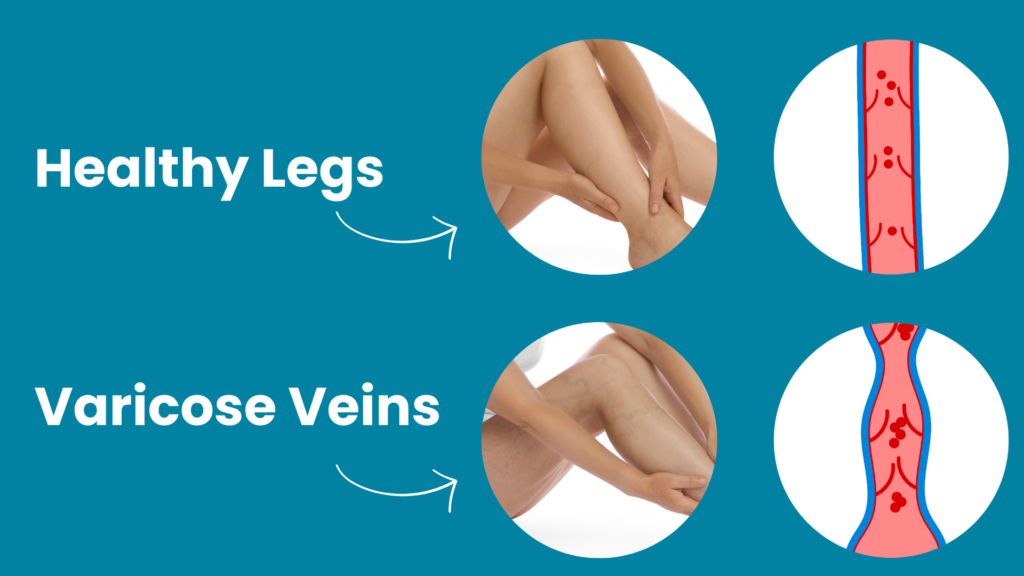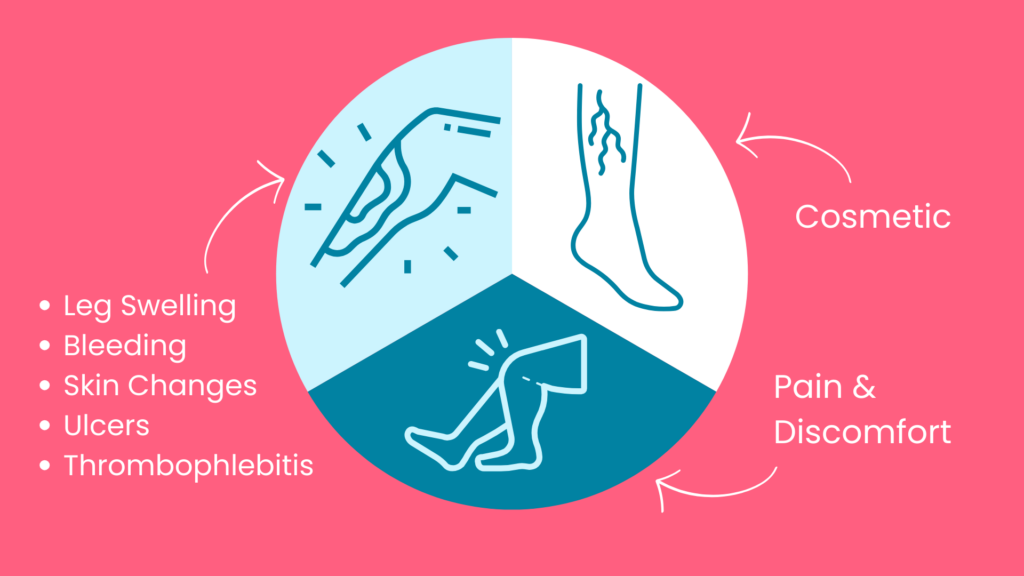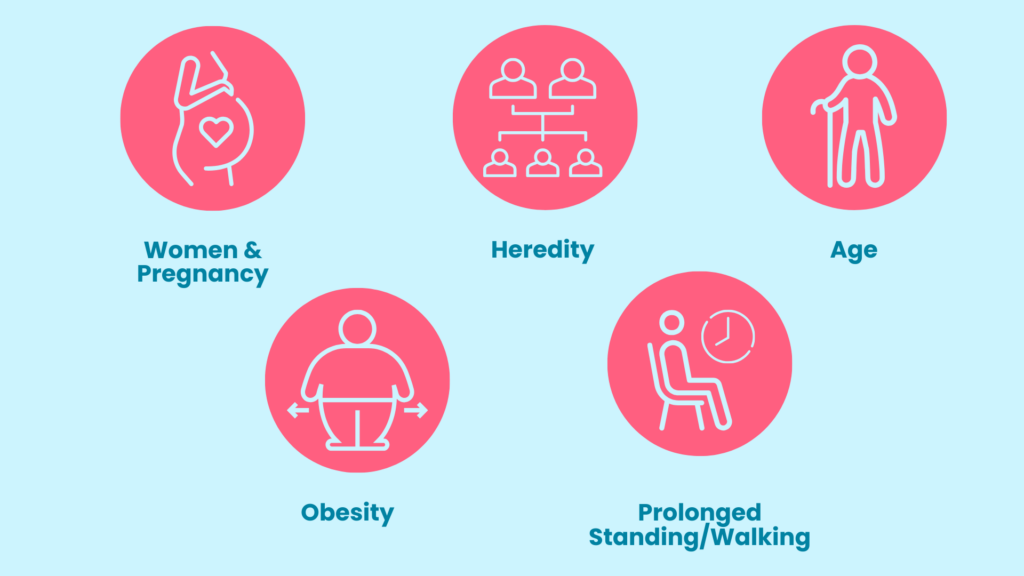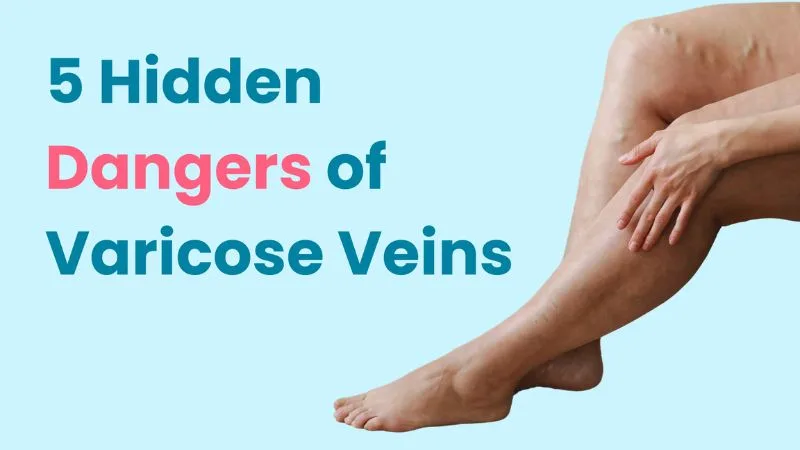About one-third of adults live with varicose veins(1). “Easy” remedies for this common condition can be found all over the World Wide Web. Many places claim they have a special varicose veins cream that will improve the appearance of dark-colored veins and relieve symptoms.
It’s accessible, easy to buy online, and promises great results (and maybe even free shipping!). Sounds great, right?
But do these creams, which sometimes cost hundreds of dollars, really work? The short answer is: no!

Varicose veins are bulging, twisted veins in the shallow part of the leg tissue. They stand out with their bluish-purple color. They can be an eyesore for some, and a source of physical pain and discomfort for others. And all of these patients want to find a solution.
But just because these creams don’t work, doesn’t mean there aren’t treatments that work…
Table of Contents
ToggleVaricose Veins Concerns

Many people have varicose veins, but their concerns over them may vary:
Cosmetic
Most patients want to treat varicose veins for appearance reasons. Some may dislike their appearance so much they no longer wear clothes that expose the lower legs.
Pain and Discomfort
Patients may feel itching, aching, heaviness, or numbness in the lower extremities. This may get worse after a long day of sitting or standing.
Leg Swelling
Some varicose veins patients also experience leg swelling. This is more common in patients with large varicosities. (That’s another term for abnormally large, swollen, twisted veins.)
Thrombophlebitis
Thrombophlebitis is an inflammatory process in the veins that causes a blood clot to form. The vein is often found near the skin’s surface or deep within a muscle(2).
If phlebitis extends above the knee, there may be an increased risk of deep vein thrombosis(3). See a doctor right away if you suspect you have thrombophlebitis.
Bleeding
Varicose vein bleeding is uncommon(4) but may signify the need for treatment. Scratching or nicking a prominent vein may cause bleeding.
Skin changes
The skin may become brownish, and eczema and lipodermatosclerosis are possible. Lipodermatosclerosis occurs when the fatty layer of the skin becomes inflamed. This, when neglected, may lead to ulcers.
Ulcers
Patients with varicose veins may also have leg ulcers. Some people may have a higher risk of developing ulcers: women, seniors, those who are immobile or obese, or those with past vein disease(5). These ulcers heal slowly and may become infected due to decreased blood flow.
Who is at Risk for Varicose Veins?

Some groups are more likely to develop this condition:
Women & Pregnancy
Women are more likely to develop varicose veins. At least 28% of new varicosities occur while pregnant(6).
During pregnancy, the extra volume of blood and fluids puts pressure on the blood vessels in the legs. These vessels work extra hard against gravity to push the blood back to the heart.
Heredity
If you have family members with varicose veins, you are more likely to have this condition. Studies show that heredity plays an important role in the cause of varicose veins(7).
Age
The older you are, the higher your risk for varicose veins. The valves that help propel the blood back to the heart weaken over time. The walls also become more dilated. Your risk increases over the age of 40.
Obesity
Extra weight puts more pressure on the legs. This makes it difficult for the valves to push blood back up. Patients who are obese are advised to lose weight for symptom relief.
Prolonged standing or walking
Our legs carry our body as we walk or stand. Doing either for prolonged periods adds pressure to the lower extremities, increasing your risk of developing varicose veins.
Why Are Leg Creams Ineffective?
Leg creams, oils, and lotions do not help treat the underlying problem of varicose veins.
Prescription creams may help with itching, skin irritation, or swelling. They do not tackle the main cause of varicose veins: the blood pooling in your legs.
Be cautious of topical products claiming to:
- Decrease swelling
- Remove hyperpigmentation
- Decrease leg discomfort
- Lighten the veins
These creams are not effective – and may cause more harm than good.
Many creams have not been clinically tested, so their ingredients may cause harm. Some may be especially bad for you if you have dermatitis or eczema.
No cream targets the cause of varicose veins. Buying one will only cost you more in the long run. It’s better to get to the root of the problem.
Alternatives to Varicose Veins Creams
Unlike creams, here are some ways to treat varicose veins:
Compression Stockings
Compression therapy is the tried-and-true treatment of varicose veins. This non-invasive treatment improves blood flow and reduces inflammation.
These stockings apply external pressure to the lower legs. This pressure prevents the reflux of blood downwards.
There are different compression stockings available. Some stockings will be better suited than others depending on your condition. Compression levels vary. They may be knee-high or thigh-high, and elastic or inelastic.
Compression stockings relieve pain, decrease swelling, and reduce the appearance of varicose veins. This is a great option if you prefer something easy and non-invasive like a cream.
Radiofrequency Ablation
Radiofrequency ablation (RFA) is a safe and minimally invasive procedure for varicose veins. The doctor uses thermal energy to seal off problematic veins. RFA has a low likelihood of complications and decreases the risk of recurrence. This outpatient procedure is best for large varicose veins.
Sclerotherapy
Sclerotherapy is best for small and mid-size veins. The doctor injects a solution into the vein, causing it to collapse. Patients undergoing sclerotherapy are advised to wear compression stockings afterward.
Vein Ligation and Stripping
In this procedure, two cuts are made — one on the top of the leg just below the groin and the other behind the knee or ankle. The vein is tied off near the upper incision (the “vein ligation”). Then, a long wire is inserted into the lower incision and pushed up through the same vein. The lower end of the wire will help pull the entire vein throughout the incision near the groin to remove it.
Phlebectomy
In this procedure, small cuts are made on the affected vein. A small hook is then used to pull the vein out of the cuts. The vein is cut and removed in several pieces. This is recommended for smaller veins.
Selecting a Treatment for Varicose Veins
The best varicose veins treatment will vary from person to person.
Patients with varicosities or those who are obese may benefit more from radiofrequency ablation or vein stripping and ligation.
If you have no symptoms and are more concerned about appearance, then compression stockings or sclerotherapy may be best for you.
Talk to your doctor about your experience to see which treatment is best for you.
When are Varicose Veins Dangerous?
The National Institute for Health and Clinical Excellence (NICE) created a guide to determine when patients with varicose veins should see a doctor(8):
Emergency
Bleeding varicosity that has eroded the skin. Go to the nearest hospital or doctor as soon as possible to get treatment for your varicose veins. They need to treat the varicosity immediately.
Urgent
Varicosities that have bled and may bleed again. If a vein bleeds again while applying pressure, seek a consultation or a referral to a doctor.
Soon
Persistent and painful ulcer(s) that will not heal despite treatment. Lower leg ulcers are dangerous and may become infected. They have trouble healing because the legs do not get enough blood flow. Make an appointment with your doctor.
Routine
Patients with active or healed ulcers or progressive skin changes like lipodermatosclerosis. They may need routine checkups with their healthcare providers. Recurrent superficial thrombophlebitis is another concern that may require a follow-up.
Conclusion
Home remedies, creams, and lotions may sound like convenient solutions. But always be careful of what you see on the internet – it might be too good to be true!
With vein disease, it is always best to see your doctor and get a professional opinion. From there, you can figure out the effective treatment you need. Your doctor can also rule out other diseases and help detect underlying conditions.
If you’re ready to treat your varicose veins head-on, contact Elite Vein Clinic. Our vein health experts provide top-of-the-line care and use the latest medical technology to treat vein disease. Elite Vein Clinic has offices in Phoenix, Chandler, Gilbert, Mesa, Scottsdale, Tempe, and Peoria.
Take charge of your health. Book a free consultation today!
References
- Campbell B. (2006). Varicose veins and their management. BMJ (Clinical research ed.), 333(7562), 287–292. https://doi.org/10.1136/bmj.333.7562.287
- Thrombophlebitis. (2020, March 03). Retrieved from https://www.mayoclinic.org/diseases-conditions/thrombophlebitis/symptoms-causes/
- Chengelis, D. L., Bendick, P. J., Glover, J. L., Brown, O. W., & Ranval, T. J. (1996). Progression of superficial venous thrombosis to deep vein thrombosis. Journal of vascular surgery, 24(5), 745–749. https://doi.org/10.1016/s0741-5214(96)70007-1
- McCarthy, W. J., Dann, C., Pearce, W. H., & Yao, J. S. (1993). Management of sudden profuse bleeding from varicose veins. Surgery, 113(2), 178–183.
- Vasudevan B. (2014). Venous leg ulcers: Pathophysiology and Classification. Indian dermatology online journal, 5(3), 366–370. https://doi.org/10.4103/2229-5178.137819
- Stansby G. (2000). Women, pregnancy, and varicose veins. Lancet (London, England), 355(9210), 1117–1118. https://doi.org/10.1016/S0140-6736(00)02057-2
- Shadrina, A. S., Sharapov, S. Z., Shashkova, T. I., & Tsepilov, Y. A. (2019). Varicose veins of lower extremities: Insights from the first large-scale genetic study. PLoS genetics, 15(4), e1008110. https://doi.org/10.1371/journal.pgen.1008110
- Surveillance report 2016 – Varicose veins in the legs (2013) NICE guideline CG168 [Internet]. London: National Institute for Health and Care Excellence (UK); 2016 Feb 4. Available from: https://www.ncbi.nlm.nih.gov/books/NBK552076/



